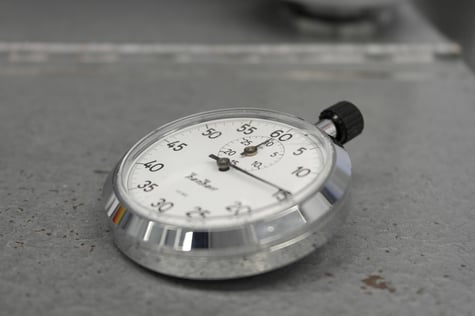Las Vegas was the venue for this year’s CTIA flagship event: Super Mobility 2016. Taking place in early September (7-9th), the spotlight was on the future of wireless in the self-proclaimed ‘Entertainment Capital of the World’.
A major theme of the event was the developments of wearable tech and tiny tracking devices - both of which fundamentally rely on great wireless antenna performance. When integrating antenna within these small devices, special care needs to be taken to ensure performance does not suffer during regular use.
Antenna performance is made especially important in wearables and trackable devices, as the promise of connectivity can only be achieved through good performance. However, it can prove a challenge to achieve performance at such levels, particularly when a small PCB is needed, and available ground space is at a premium.
In GPS/GNSS applications, where signal is very weak, antenna need to be positioned away from all noise on the PCB. This makes the antenna selection decision all the more important.
So, what type of antenna should you select?
Standalone or modular antenna?
Single frequency modules containing antenna onboard are popular in products with wide varieties of application. Many 2.4GHz, Bluetooth, Wi-Fi and Zigbee applications select modular antenna for their products, as they provide an easy solution to RF design layout issues.
Notably, however, single frequency modules are not such a popular choice in GPS/GNSS products - particularly not in wearables or trackers. At first thought, wouldn’t a small PCB mean RF design layout issues are one of the biggest challenges? Module antenna have their own set of challenges when integrated within small devices:
Module antenna cannot be treated like other components
Antenna modules cannot be treated like other components, they still need to receive the same care and attention as a standalone antenna, otherwise, performance issues may arise.
Considering the placement, optimum layout, ground-plane free areas and the material of nearby components is still necessary. Placement of modular antenna can be even more difficult, as modular antenna are already tuned and matched nearby components can throw-off impedance and result in return loss.
With any selected antenna, follow the guidelines to best position it, but this is made even more important with a modular, out-of-the-box antenna solution.
Modular devices on small PCBs can prove difficult to integrate
Devices with onboard antenna are not as regularly seen in small wearable applications, simply because of the size of modular devices, and the small form-factor wearables need to be designed within.
Standalone antenna placement is often a challenge within itself, but when you are required to place a large (comparatively) modular device within a small corner of your PCB, it can become the root of other issues.
If you require more flexibility with antenna placement, with less of a physical impact on the layout of your PCB, a standalone antenna may provide a few alternative solutions to antenna integration issues.
Tuning and Matching Issues
Modular antenna are great out-of-the-box solutions in larger products, but when you consider the radical differences in PCB sizes in wearable products, then come to terms with close-quarters component placement, a modular antenna may shift from optimal tune.
Discrete antenna allow you to match precisely for your end application, giving you more flexibility in integration, allowing you to refine performance when the product housing, nearby components cause a shift in tune. Where performance defects are exaggerated in smaller devices, it may be vital that you have this close control over antenna matching.
Conclusion
When compared directly with discrete, embedded antenna, modular antenna provide great solutions to layout and common integration issues. However, discrete antenna are the preferred choice for small products with GPS/GNSS applications.
With a choice of surface-mounted, ceramic patch, or FPC & connector antenna (such as flexiiANT), engineers have a selection of antenna to choose from and design-in. Each type will have it’s own set of advantages and disadvantages, most disadvantages (in the right device kind) can be designed around.
When space is at a premium, modular antenna may not be the best choice for small wearable devices. Modules can take up unnecessary room, restrict the design of your layout and can be easily shifted from optimum tune in a small product.




